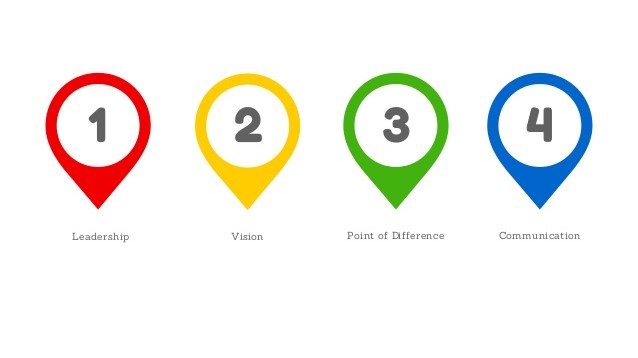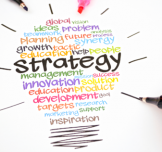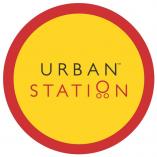You are here
The Innovation Engine Podcast: Breakthrough Insights from Rowan Gibson – Part 2

This is a transcript and audio file from the popular podcast “The Innovation Engine”, hosted by Will Sherlin, featuring an interview with Rowan Gibson, author of “The Four Lenses of Innovation.”
“Welcome to the Innovation Engine podcast, I’m Will Sherlin, and on this week’s episode, we’ll be looking at the 4 lenses of innovation – what the 4 lenses are and how they can be used to drive corporate innovation, and how they can be employed to emulate the mind of the innovator.
Here with us today to discuss all that and more is Rowan Gibson, a world-renowned innovation expert who has served as a keynote speaker on the subject of innovation in 60 countries around the world. Rowan is the internationally bestselling author of the forthcoming book The Four Lenses of Innovation. He has previously written two major books on corporate innovation and business strategy: Innovation to the Core and Rethinking the Future, which is published today in over 20 languages. Rowan is also the co-founder of Innovation Excellence.com, the most popular innovation website in the world, built by an international group of over 26,000 members from 175 countries. And if you’ve been a long-time listener of this podcast, you’ll remember him from the 13th episode of “The Innovation Engine,” when he talked about Building a Blueprint for Innovation.
The book looks at innovation through something of a historical lens. What do today’s innovators owe to our predecessors from the Renaissance?
Yeah, the first part of the book actually goes back in time. I mean, there was this period of tremendous creativity and invention and innovation in Europe between the fourteenth and the seventeenth centuries, and you look back at that and go “Woah! What happened there?” And of course, a lot of it had to do with the cultural environment. It all started in those booming city-states in Northern Italy – Venice, Florence, Milan – where these rich merchant families like the Medicis became the patrons of some of the best artists, and scientists, and thinkers of their time. So these brilliant people all came together and had the opportunity to cross-pollinate ideas and insights from their different fields, disciplines, and cultures. It was a real intersection point. And out of that came so much that was new and revolutionary. But, again, I think there was much more to the story than culture alone.
Some modern writers on creativity and innovation have pointed to the Renaissance and they kind of say, “Well, that’s the answer. It was all about creating this network effect. It was all about building the right environment for creativity and innovation to flourish. So if we can do that in our organizations today we’ll be fine.” And, of course, I agree that this is important for companies to do. But I wanted to dig deeper into what happened in the Renaissance. I wanted to try to figure out what those innovators – like da Vinci, or Galileo, or Gutenberg – were thinking. Because if we are going to solve the mystery of where new ideas come from, we need to understand not just the environments that enhance our capacity to dream up and introduce new things, but also the thinking processes inside the human mind that lead innovators to their “Eureka moments.”
And what we find out is that the Renaissance was a special time in history when western Europeans were beginning to throw off the mental constraints of the medieval era, the Dark Ages. Prior to the Renaissance, the prevailing attitude was “You can’t think this, and you can’t think that, and you can’t ask questions or you’ll be burned at the stake as a heretic.” But then western Europeans found themselves embracing a completely new philosophy called humanism, which encouraged people to tap into their own intellectual and creative capacities in unprecedented ways. So it wasn’t just about the cultural change and the ability to network with others, it was also about the mental change – the fundamental change in outlook and perspectives that opened people’s minds to new ideas and opportunities.
And what I discovered was that there were four main perspectives that became prevalent in the Renaissance period. First, was the tendency to challenge conventional wisdom. You know, “What if the Earth is not the center of the Universe? What if it revolves around the Sun along with the other planets? What if everything we know about human anatomy, and medicine, and chemistry, and physics is nonsense? What if we challenged our traditional understandings of these things – the theories that have been around and uncontested for a thousand years, since the times of ancient Greece and Rome?” Or it was Columbus saying “What if we could get to the East Indies much faster by sailing west instead of east and circumnavigating the globe?” And then Amerigo Vespucci asked, “What if these new lands Columbus has just discovered are not the Indies at all but in fact another whole continent—a New World?” So these were very contrarian questions – very different ways of thinking that challenged a lot of orthodoxies.
The second perspective had to do with trends. You know, the Renaissance period was an age of the new. There were these new philosophies, new kinds of art and music and architecture, new scientific breakthroughs, new industrial methods, new trading routes, new influences from the East, new methods of transportation, new countries – and even a whole new continent – on the map, new kinds of food, new styles of clothing,.. there was just this whole explosion of newness. And the innovators were people who saw all this change going on around them and were able to spot and exploit the opportunities inherent in those trends.
The third perspective was about looking at skills and assets in new ways and figuring out how to stretch them, or recombine them, or repurpose them in order to do totally new things. Prior to that, if you go back to the Middle Ages, people used to learn a trade and that was that. You were a carpenter, or a goldsmith, or whatever else, and that’s basically all you did your whole life. But then people started to ask, “What else could I do with these skills? How could I stretch them into new opportunities?” So somebody like Gutenberg, for example, studied to be a goldsmith just like his father, and his grandfather, and his great-grandfather before that. But he said “Maybe I don’t have to spend the rest of my life making coins in the royal mint like all my ancestors. Maybe I can something else with these metalworking skills.” And his big idea of course was to create metal, movable type for use in a printing press which literally changed the world. But it was also about using assets differently, too. Once Gutenberg had cast all those individual metal letters, he needed to build some form of press. And he got his inspiration from a device that had been around for thousands of years – one that was used commonly back then in the Rhineland region of Germany where he lived: and that was the wooden wine press. So this third perspective is about redeploying skills and assets in completely new ways or new contexts.
The fourth mental perspective that became really prevalent in the Renaissance era was a kind of rampant curiosity about how everything worked – the human body, the natural world, the universe itself – and a desire to use this new knowledge to make the world a better place. That’s always been quite fundamental to innovation and to human progress, this attempt to better understand the mechanical forces of nature and then to manipulate these forces in an effort to improve quality of life or productivity in some way. But the medieval era had been a time when people were very much constrained from doing that by the Church – that’s why they call it the Dark Ages. Progress effectively came to a grinding halt for a thousand years. And then along came the Renaissance and the humanist movement, and people suddenly felt mentally liberated to kind get out there and study everything and make things better for themselves and for the next generations. So they were able to discover innovative solutions to important human needs and problems – some of which we still benefit from today.
So it turns out that there are these four perspectives or thinking patterns that seem to drive great leaps of creativity and innovation. And the basic premise of the book is that they have been the catalysts for innovation throughout human history. And they are exactly the same perspectives that have allowed modern-day innovators to discover their big ideas. So there’s really not that much difference between Renaissance innovators like Galileo, Gutenberg, and Leonardo da Vinci, and some of our innovation heroes today, like say, Steve Jobs, Jeff Bezos, or Richard Branson. They are all using exactly the same perspectives, whether they’re conscious of it or not, to come up with their breakthrough innovations.
These four perspectives are the four lenses of innovation that I’m referring to in the title of the book. And the rest of the book is about using those lenses to drive your innovation efforts and to infuse creativity into your organization. In the third part know more about the “all the time, everywhere” concept.


































































EgyptInnovate site is not responsible for the content of the comments